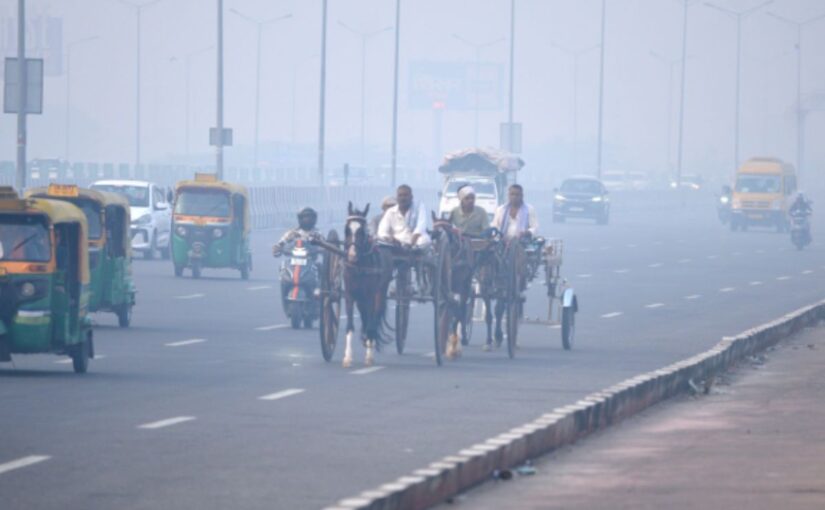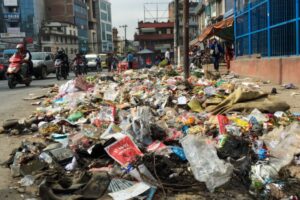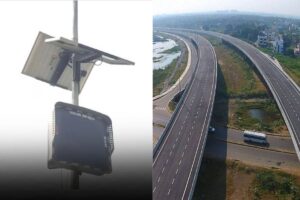The recent winds have provided a temporary relief from the severe air pollution. The hazardous air pollution of Delhi air quality has plagued Delhi in recent weeks. Recently it is seen that the air quality is slightly improving. On Wednesday, though the Delhi Air Quality (AQI) stood at 303, still it is classified in a “very poor” category. Whereas noticeable improvement was seen from Tuesday’s Delhi Air Quality to 343. Though there were improvements, experts caution that this relief is short-lived. The experts have warned that the pollution levels are […]

Delhi's Air Quality To Worsen
The recent winds have provided a temporary relief from the severe air pollution. The hazardous air pollution of Delhi air quality has plagued Delhi in recent weeks. Recently it is seen that the air quality is slightly improving.
On Wednesday, though the Delhi Air Quality (AQI) stood at 303, still it is classified in a “very poor” category. Whereas noticeable improvement was seen from Tuesday’s Delhi Air Quality to 343. Though there were improvements, experts caution that this relief is short-lived. The experts have warned that the pollution levels are expected to rise again over the weekend as the speed of the winds increase.
The Central Pollution Control Board (CPCB) recorded data from 38 monitoring stations across Delhi. Out of these, there were 17 stations that reported “poor” air quality category. While on the other hand the remaining 21 stations were indicated in the “very poor” air quality.
Furthermore in contrast, the satellite towns surrounding Delhi fared somewhat better. Moreover it was seen that Faridabad recorded a “moderate” AQI of 186. Whereas the neighboring Noida, Ghaziabad, Gurugram, and Greater Noida were categorized in “poor” air quality, with AQI values between 207 and 230.
Read More: Delhi Air Pollution: AQI Hits ‘Severe’ Levels, Air Quality Remains Dangerous
Also are per the predictions of experts the air quality will likely remain in the “very poor” range until Saturday. This will further cause deterioration after that. The Air Quality Early Warning System has issued a bulletin advising the public to brace for worsening conditions once the wind speed drops.
Moreover the IMD has also noted that a western disturbance is expected to influence the region soon. This will also reduce wind speeds and would eventually make the air quality worse. The IMD has issued a yellow alert for Friday, forecasting moderate to dense fog during the morning hours.
On Wednesday morning, Delhi’s weather saw a slight dip in temperature. The minimum temperature dropped to 10.4°C, which was slightly lower than the previous day. Whereas the maximum temperature also reached at 27.3°C. This is considered just above the seasonal average. The IMD predicts that both maximum and minimum temperatures will fall slightly on Thursday. This hovers around a maximum temperature of 26°C and 9°C.
Read More: Delhi’s Air Quality Improves Slightly, But A ‘Severe’ Outlook Looms Ahead
To combat the pollution, the Delhi Police Commissioner has directed all 15 district units and PCR teams to assist the traffic police. This enforces the Graded Response Action Plan (GRAP) of Stage 4. This plan, focuses on stricter pollution control, and also targets end-of-life vehicles, as well as BS-3 petrol and BS-4 diesel vehicles. Also the vehicles that lack a valid Pollution Under Control (PUC) certificates.
With over 5,000 traffic police officers already are enforcing these rules since November 15. The police have ramped up efforts by involving district police staff. These personnel, usually not tasked with traffic duties. They are now stationed at key locations to ensure compliance with anti-pollution regulations. Whereas a special attention is given to the vehicle emissions, and construction activities.



















